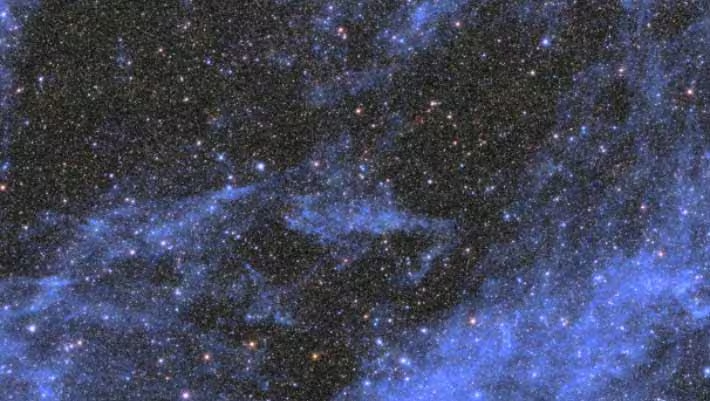Top Stories Tamfitronics
ESA astronomers have released a 208-gigapixel mosaic of images taken by Euclid, a mission launched in 2023 to study why the Universe is expanding at an accelerating rate.

This mosaic made by ESA’s Euclid space telescope contains 260 observations collected in 2024. Image credit: ESA / Euclid / Euclid Consortium / NASA / CEA Paris-Saclay / J.-C. Cuillandre / E. Bertin / G. Anselmi.
The new Euclid mosaic contains 260 observations made between March 25 and April 8, 2024.
In just two weeks, the space telescope covered 132 square degrees of the southern sky in pristine detail, more than 500 times the area of the full Moon.
This mosaic accounts for 1% of the wide survey that Euclid will capture over six years.
During this survey, Euclid will observe the shapes, distances and motions of billions of galaxies out to 10 billion light-years. By doing this, it will create the largest cosmic 3D map ever made.
This first piece of the map already contains around 100 million sources: stars in our Milky Way and galaxies beyond.
Some 14 million of these galaxies could be used to study the hidden influence of dark matter and dark energy on the Universe.
“This stunning image is the first piece of a map that in six years will reveal more than one third of the sky,” said Euclid project scientist Dr. Valeria Pettorino, an astronomer at ESA.
“This is just 1% of the map, and yet it is full of a variety of sources that will help scientists discover new ways to describe the Universe.”
“We have already seen beautiful, high-resolution images of individual objects and groups of objects from Euclid,” said Dr. Jason Rhodes, an observational cosmologist at NASA’s Jet Propulsion Laboratory in Southern California who is the U.S. science lead for Euclid and principal investigator for NASA’s Euclid dark energy science team.
“This new image finally gives us a taste of the enormity of the area of sky Euclid will cover, which will enable us to take detailed measurements of billions of galaxies.”
The spacecraft’s sensitive cameras captured an incredible number of objects in great detail.
A special feature visible in the mosaic are dim clouds in between the stars in our own Milky Way Galaxy, they appear in light blue against the black background of space.
They are a mix of gas and dust, also called Galactic cirrus because they look like cirrus clouds.
Euclid is able to see these clouds with its super sensitive visible light camera because they reflect optical light from the Milky Way.
The clouds also shine in far-infrared light, as seen by ESA’s Planck mission.
The new mosaic is a teaser for what’s to come from the Euclid mission.
Since the mission started its routine science observations in February, 12% of the survey has been completed.
The release of 53 square degrees of the survey, including a preview the Euclid Deep Field areas, is planned for March 2025.
The mission’s first year of cosmology data will be released to the community in 2026.
“What really strikes me about these new images is the tremendous range in physical scale,” said Dr. Mike Seiffert, project scientist for the NASA contribution to Euclid.
“The images capture detail from clusters of stars near an individual galaxy to some of the largest structures in the Universe.”
“We are beginning to see the first hints of what the full Euclid data will look like when it reaches the completion of the prime survey.”



